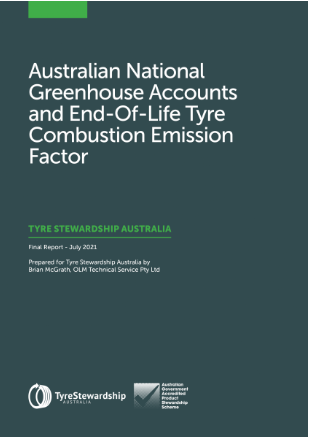Technical Information for Tyre Derived Fuel
Purpose
Tyre Stewardship Australia has prepared the following summary document, which outlines the different technical aspects relevant to Tyre Derived Fuel (TDF). This resource is designed to inform stakeholders across the resource recovery and manufacturing sectors, providing detailed insights into fuel composition, combustion characteristics, and regulatory factors.
Background
TDF is produced through the shredding of end-of-life tyres, generally to a size range of between 50–150 mm. It can be used as a solid alternative fuel to replace fossil fuels in cement kilns and other high-temperature fuel-burning applications, where suitable feed systems and emissions controls are in place.
Australia has updated its National Greenhouse and Energy Reporting (NGER) Scheme to include new emission and energy content factors specific to passenger and truck tyres, reflecting improved accuracy in carbon reporting for TDF combustion.
Technical Specifications Report
This report provides a detailed overview of:
- Typical testing requirements (proximate and ultimate analysis)
- Greenhouse gas emission factors and energy content values
- Physical and chemical characteristics of TDF
- Relevant data for combustion systems, including trace metal content
End-Of-Life Tyre Combustion Emission Factors
In 2021, TSA commissioned a report to review Australia’s National Greenhouse Accounts and the combustion emission factors associated with end-of-life (EOL) tyres. The objective was to ensure that the energy and emissions profile of tyre-derived fuel (TDF) was more accurately reflected, particularly in comparison to fossil fuels. This would help unlock its potential as a lower-emissions alternative for use in energy-intensive industries.
The report presented several key findings:
- The biomass content in EOL tyres—due to the natural rubber in passenger, truck and off-the-road (OTR) tyres—is significant and must be accounted for.
- TDF has a higher calorific value than coal.
- When used as a fossil fuel replacement, TDF can reduce greenhouse gas emissions by approximately 30% for the same energy output.
At the time of the report, the National Greenhouse and Energy Reporting (NGER) Scheme did not recognise tyres as a stand-alone fuel type. This created a barrier for industries looking to transition to lower-emissions alternatives like TDF, as the existing emissions factor underestimated its benefits.
After commissioning the report, TSA worked closely with the Federal Government to propose a 2022 update to the NGER scheme legislation, specifically to create 2 new fuel types for end-of-life tyres, allowing NGER reports to reflect emissions more accurately from TDF combustion. The updated amendments can be found here.
Frequently Asked Questions
TDF is produced from tyres through shredding, generally to a range of around 50 – 150 mm.
Tyres can be added as a solid fuel to replace fossils fuels, for combustion in cement kilns, boilers, furnaces, and pulp and paper mills if the appropriate processing and feed systems are in place. Since conducting this emission factors research, TSA has supported tyre recyclers and the cement industry by providing additional technical information about EOLT, to support TDF use in Australian cement kilns.
The use of TDF as a solid fuel in cement kilns is a relatively common practice internationally and has occurred in Australia in the past, however at the time of this report, no Australian kilns or mills were utilising TDF. A large proportion of Australia’s EOLT are currently exported, a significant percentage of which is assumed to be used as TDF in kilns around the world.
For passenger car tyres the new designated energy content factor is 32 GJ/t and the new CO2 emission factor is 62.8 kgCO2-e/GJ
For truck and off-the road tyres the new designated energy content factor is 27.1 GJ/t and the new CO2 emission factor is 55.9 kgCO2-e/GJ
The changes in legislation came into force on 1st July 2022.

